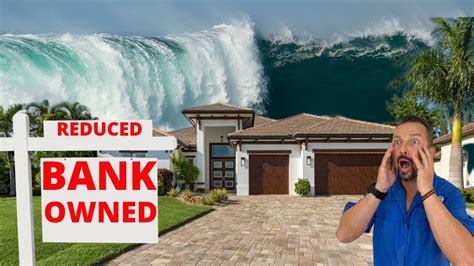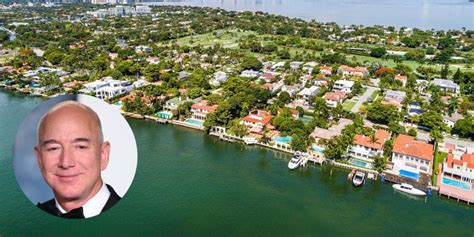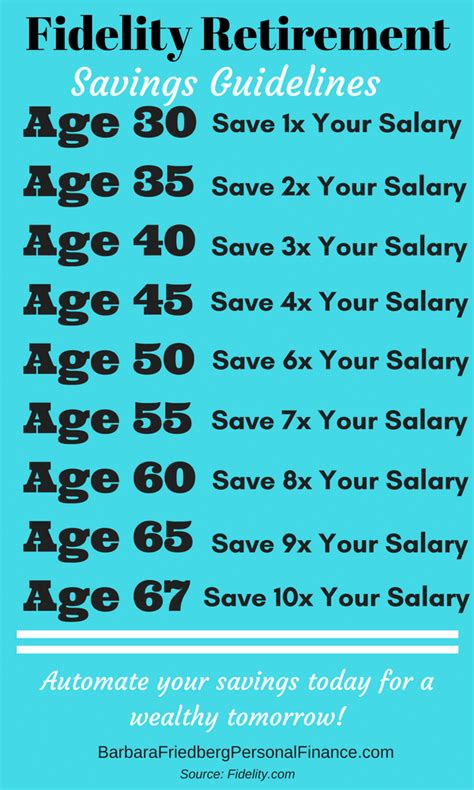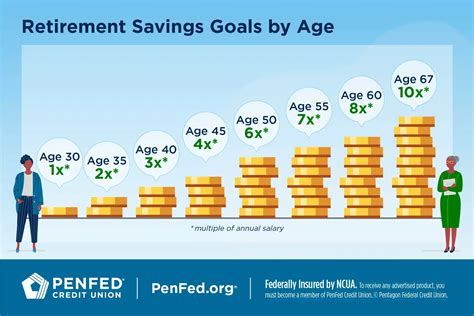
South Florida is grappling with a foreclosure surge, with the Miami-Fort Lauderdale-West Palm Beach metropolitan area leading the nation in foreclosure rates. One in every 1,843 housing units in this region had a foreclosure filing in May, according to a recent ATTOM Data Solutions report, outpacing other major metropolitan areas across the country. This unsettling trend signals potential challenges for the housing market and raises concerns about the financial stability of homeowners in the region.
The high foreclosure rate in South Florida is driven by a complex interplay of factors, including rising interest rates, inflation, and the lingering economic effects of the COVID-19 pandemic. Experts suggest that many homeowners who took advantage of pandemic-era mortgage forbearance programs are now facing difficulties in resuming their regular payments, leading to an increase in delinquencies and, ultimately, foreclosures. Furthermore, the rapid rise in property values in recent years has made it more challenging for some homeowners to afford their mortgage payments, particularly those with adjustable-rate mortgages or those who are heavily leveraged.
“After the historic low foreclosure activity we saw coming out of the pandemic, it should come as no surprise that foreclosure activity is returning to more normal levels,” said Rob Barber, CEO at ATTOM. “While overall foreclosure activity is still below pre-pandemic levels, the continued increase suggests that we may see further increases in the coming months.” The report highlights a nationwide trend of increasing foreclosure activity, but South Florida’s position at the top of the list underscores the specific vulnerabilities of its housing market.
The situation in South Florida is particularly concerning because of the region’s large population and its significant reliance on the tourism and hospitality industries, which were heavily impacted by the pandemic. While the economy has largely recovered, some sectors are still struggling, and many individuals are still facing financial hardship. This has created a perfect storm of economic pressures that are contributing to the rise in foreclosures.
The Numbers Behind the Crisis
The ATTOM Data Solutions report provides a detailed snapshot of the foreclosure landscape in the United States. In May 2024, there were a total of 32,681 U.S. properties with foreclosure filings, which included default notices, scheduled auctions, or bank repossessions. This represents a 3% increase from the previous month and an 8% increase from May 2023.
While the national foreclosure rate is increasing, South Florida’s rate is significantly higher than the national average. The Miami-Fort Lauderdale-West Palm Beach metro area’s rate of one in every 1,843 housing units with a foreclosure filing is more than double the national average of one in every 3,446 housing units. This stark difference highlights the severity of the foreclosure crisis in South Florida and underscores the need for targeted interventions to address the problem.
Other metropolitan areas with high foreclosure rates include Cleveland-Elyria, Ohio (one in every 2,071 housing units); Columbia, South Carolina (one in every 2,155 housing units); Bakersfield, California (one in every 2,247 housing units); and Trenton, New Jersey (one in every 2,314 housing units). While these areas are also experiencing increasing foreclosure activity, none of them have reached the same level as South Florida.
The Impact on Homeowners
The foreclosure crisis is having a devastating impact on homeowners in South Florida. Foreclosure can result in the loss of a home, damage to credit scores, and emotional distress. It can also have a ripple effect on communities, leading to decreased property values and increased blight.
Many homeowners facing foreclosure are unaware of the resources available to them. There are a number of government and non-profit organizations that offer assistance to homeowners struggling to pay their mortgages. These resources can include counseling, legal aid, and financial assistance.
Homeowners who are facing foreclosure should take action as soon as possible. The sooner they seek help, the more options they will have. They should contact their lender to discuss possible solutions, such as a loan modification or a forbearance agreement. They should also contact a housing counselor to get advice and support.
The Role of Rising Interest Rates and Inflation
The Federal Reserve’s efforts to combat inflation by raising interest rates have had a significant impact on the housing market. Higher interest rates have made it more expensive to borrow money, which has led to a decrease in demand for homes. This, in turn, has put downward pressure on home prices.
For homeowners with adjustable-rate mortgages, rising interest rates can be particularly challenging. As their interest rates increase, their monthly mortgage payments also increase, making it more difficult to afford their homes. This is one of the key factors contributing to the rise in foreclosures in South Florida.
Inflation is also playing a role in the foreclosure crisis. As the cost of goods and services increases, homeowners have less money available to pay their mortgages. This is especially true for low- and moderate-income households, who are more likely to be struggling to make ends meet.
The Legacy of the Pandemic
The COVID-19 pandemic had a profound impact on the U.S. economy, and the housing market was no exception. In the early months of the pandemic, millions of Americans lost their jobs, and many homeowners struggled to pay their mortgages.
To help homeowners avoid foreclosure, the federal government implemented a number of programs, including a mortgage forbearance program that allowed homeowners to temporarily suspend their mortgage payments. While these programs were successful in preventing a wave of foreclosures during the pandemic, they have also created a backlog of homeowners who are now facing difficulties in resuming their regular payments.
As the forbearance programs expire, many homeowners are finding that they cannot afford their new mortgage payments, which are often higher than their previous payments due to accrued interest and fees. This is contributing to the rise in foreclosures in South Florida and across the country.
Government and Community Responses
The rising foreclosure rates in South Florida have prompted responses from both government agencies and community organizations. These responses are aimed at providing assistance to homeowners facing foreclosure and mitigating the negative impacts of the crisis on communities.
Government initiatives include:
- Foreclosure Prevention Counseling: The U.S. Department of Housing and Urban Development (HUD) provides funding to housing counseling agencies that offer free or low-cost foreclosure prevention counseling to homeowners. These agencies can help homeowners understand their options and develop a plan to avoid foreclosure.
- Loan Modification Programs: The federal government has also implemented loan modification programs that allow homeowners to modify their mortgages to make them more affordable. These programs can include reducing the interest rate, extending the loan term, or forgiving a portion of the principal balance.
- Legal Aid: Legal aid organizations provide free or low-cost legal assistance to homeowners facing foreclosure. They can help homeowners understand their rights and represent them in court.
Community organizations are also playing a vital role in addressing the foreclosure crisis. These organizations provide a range of services, including:
- Financial Literacy Education: Many community organizations offer financial literacy education to help homeowners better manage their finances and avoid foreclosure.
- Emergency Assistance: Some organizations provide emergency assistance to homeowners who are struggling to pay their mortgages, such as grants or loans to cover mortgage payments.
- Community Development: Community development organizations work to revitalize neighborhoods that have been affected by foreclosures. They may purchase and rehabilitate foreclosed properties, build new affordable housing, or provide other services to help stabilize communities.
Long-Term Implications for the South Florida Housing Market
The foreclosure crisis in South Florida has significant long-term implications for the region’s housing market. The increased supply of foreclosed properties on the market is putting downward pressure on home prices, which could lead to a decline in property values. This could have a negative impact on homeowners who are not facing foreclosure, as their home equity could decrease.
The foreclosure crisis could also lead to increased blight and crime in affected neighborhoods. Vacant and abandoned properties are often targets for vandalism and crime, which can further depress property values and make it more difficult to attract new residents and businesses.
The long-term economic consequences are worrying as experts predict a further dampening in the local economy caused by depressed property values and the knock-on effects on other sectors. The ability of potential future homeowners to secure housing could also be greatly limited with the increased tightening of mortgage options from lenders in the area.
Expert Opinions and Analysis
Real estate analysts and economists are closely monitoring the foreclosure crisis in South Florida. Many experts believe that the crisis is likely to continue in the coming months, as more homeowners face difficulties in resuming their regular mortgage payments.
“We are seeing a significant increase in foreclosure activity in South Florida, and we expect this trend to continue for the foreseeable future,” said a leading real estate analyst in Miami. “The combination of rising interest rates, inflation, and the expiration of pandemic-era forbearance programs is creating a perfect storm for homeowners.”
Some experts believe that the foreclosure crisis could lead to a significant correction in the South Florida housing market. A correction is a decline in home prices of 10% or more. While it is difficult to predict the future, the current conditions in the South Florida housing market suggest that a correction is possible.
Other analysts, while acknowledging the concerning trends, suggest the market is more resilient now than during the 2008 financial crisis. They highlight stricter lending standards and a stronger overall economy as mitigating factors that could prevent a catastrophic collapse. However, they caution that continued vigilance and proactive interventions are necessary to manage the situation effectively.
Strategies for Homeowners to Avoid Foreclosure
For homeowners in South Florida facing financial difficulties, several strategies can help avoid foreclosure:
- Contact Your Lender Immediately: The first and most important step is to contact your lender as soon as you anticipate trouble making mortgage payments. Lenders often have programs to assist borrowers, such as loan modifications, forbearance, or repayment plans.
- Seek Housing Counseling: HUD-approved housing counseling agencies provide free or low-cost advice and assistance to homeowners. Counselors can help you understand your options, negotiate with your lender, and develop a budget.
- Explore Loan Modification Options: A loan modification involves changing the terms of your mortgage to make it more affordable. This could include reducing the interest rate, extending the loan term, or forgiving a portion of the principal balance.
- Consider a Forbearance Agreement: A forbearance agreement allows you to temporarily suspend or reduce your mortgage payments. This can provide short-term relief while you get back on your feet financially. However, it’s important to understand that you will eventually need to repay the missed payments.
- Look into a Repayment Plan: A repayment plan allows you to gradually catch up on your missed mortgage payments over a set period of time. This can be a good option if you have experienced a temporary financial setback but expect to be able to resume your regular payments soon.
- Refinance Your Mortgage: If interest rates have fallen since you took out your original mortgage, you may be able to refinance your mortgage at a lower rate. This can reduce your monthly mortgage payments and make your home more affordable.
- Consider Selling Your Home: If you are unable to afford your mortgage payments and have no other options, you may need to consider selling your home. This can help you avoid foreclosure and protect your credit.
- Understand Your Rights: It’s important to understand your rights as a homeowner facing foreclosure. You have the right to receive notice of the foreclosure proceedings, the right to defend yourself in court, and the right to explore alternatives to foreclosure.
Conclusion
The foreclosure crisis in South Florida is a serious issue that requires attention and action. The rising foreclosure rates are having a devastating impact on homeowners and communities, and the long-term implications for the region’s housing market are significant. Government agencies, community organizations, and homeowners themselves must work together to address the crisis and mitigate its negative consequences. By providing assistance to homeowners, revitalizing affected neighborhoods, and promoting responsible lending practices, it is possible to create a more stable and sustainable housing market in South Florida. The need for proactive measures is evident and demands immediate response to prevent further escalation of the crisis. The collaborative effort between the authorities and the affected communities will be a critical element to find a resolution to this problem.
Frequently Asked Questions (FAQ)
1. Why is South Florida experiencing such a high foreclosure rate compared to other parts of the US?
South Florida’s high foreclosure rate is attributed to a combination of factors. These include the expiration of pandemic-era mortgage forbearance programs, rising interest rates making mortgage payments more expensive, inflation impacting household budgets, and the region’s vulnerability due to its reliance on tourism and hospitality industries that were heavily impacted by the pandemic. Many homeowners who benefited from forbearance are now struggling to resume regular payments, leading to increased delinquencies and foreclosures.
2. What can homeowners in South Florida do if they are facing potential foreclosure?
Homeowners facing foreclosure should immediately contact their lender to explore options like loan modifications, forbearance agreements, or repayment plans. They should also seek advice from HUD-approved housing counseling agencies, which offer free or low-cost assistance. Exploring options such as refinancing, selling the property, and understanding their rights during foreclosure proceedings are also crucial steps. Legal aid organizations can provide legal assistance and represent homeowners in court, if necessary.
3. How do rising interest rates contribute to the foreclosure crisis in South Florida?
Rising interest rates, implemented by the Federal Reserve to combat inflation, make it more expensive to borrow money, impacting homeowners with adjustable-rate mortgages directly. As interest rates increase, their monthly mortgage payments also increase, making it more difficult to afford their homes. This situation strains household budgets, especially when coupled with rising costs of goods and services due to inflation, further contributing to the rise in foreclosures.
4. What are the potential long-term impacts of the foreclosure crisis on the South Florida housing market and the local economy?
The long-term impacts include downward pressure on home prices due to an increased supply of foreclosed properties, potentially leading to a decline in property values. This can negatively affect homeowners’ equity and overall wealth. Increased blight and crime in affected neighborhoods can further depress property values. Economically, depressed property values and the consequent impacts on other sectors of the economy are concerning. The availability of future housing could also be limited by tightened mortgage conditions from lenders, affecting access to housing for potential homeowners.
5. What government and community resources are available to help homeowners in South Florida avoid foreclosure?
Government resources include HUD-funded housing counseling agencies providing free foreclosure prevention counseling and federal loan modification programs that make mortgages more affordable. Legal aid organizations offer free or low-cost legal assistance. Community organizations provide financial literacy education, emergency assistance such as grants or loans for mortgage payments, and community development initiatives to revitalize neighborhoods affected by foreclosures. These resources aim to support homeowners, stabilize communities, and promote responsible lending practices to mitigate the negative consequences of the foreclosure crisis.









